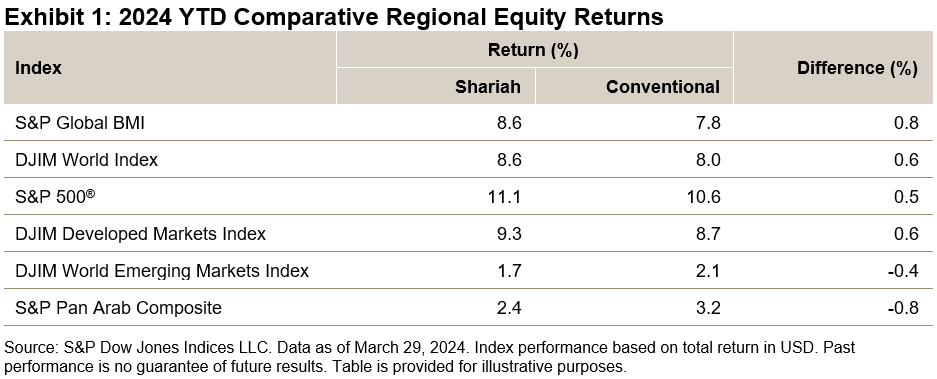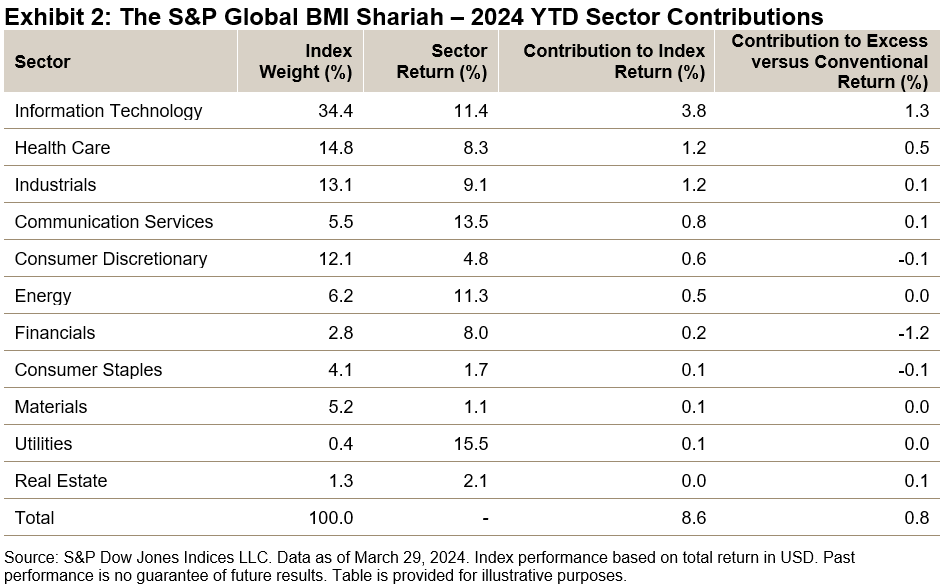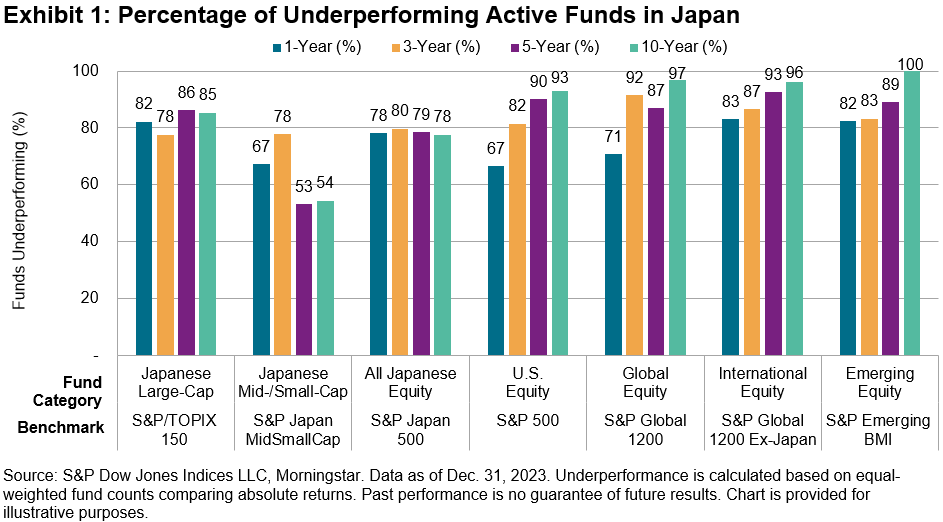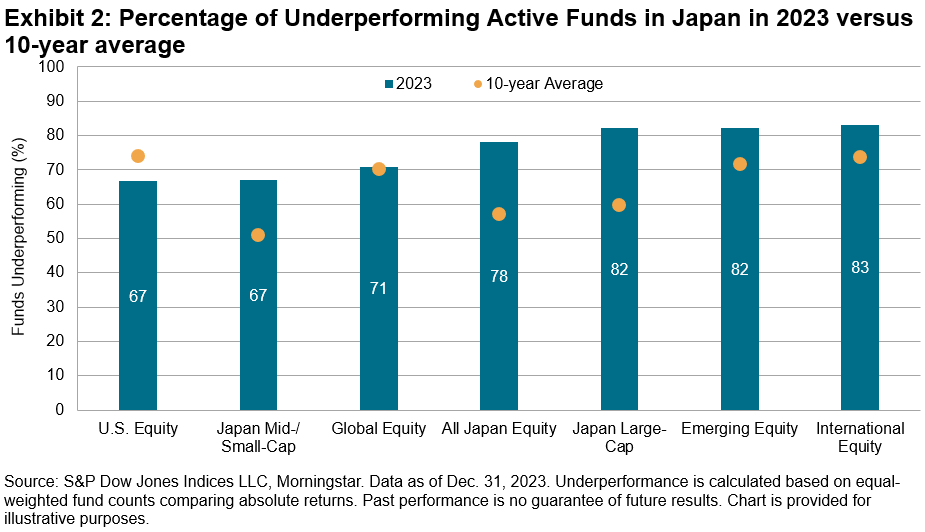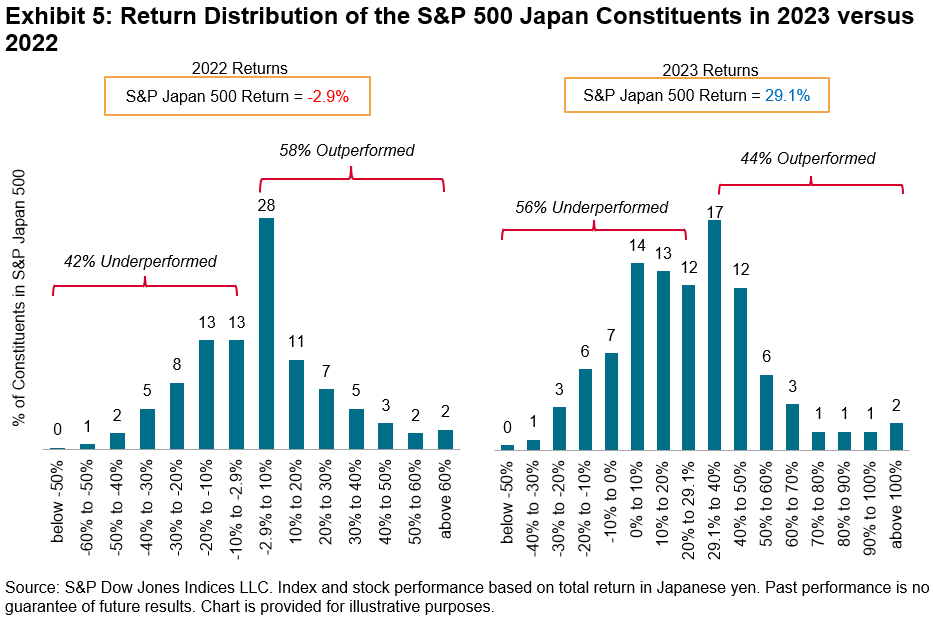With the 10-year U.S. Treasury yield hovering around 4.5%, investors may be able to find attractive yields without taking on too much risk. The challenge, however, is maintaining purchasing power relative to inflation (USD 1,000 in December 1999 was only worth USD 538 as of March 2024). For those seeking income and total returns that have historically kept pace with or exceeded inflation, high quality dividend strategies may be appealing.
With almost 20 years of live history, the S&P High Yield Dividend Aristocrats Index tracks companies in the S&P Composite 1500® that have consistently increased their total dividends per share annually for at least 20 consecutive years.1 In this blog, we will examine the historical dividend growth and risk and return statistics for this index and highlight how it tends to track higher quality companies.
Dividend Growth, Performance and Inflation
Historically, the S&P High Yield Dividend Aristocrats Index has tracked companies that have grown their dividends at a rate that has exceeded inflation over the long term. From 2000 to 2023, its dollar dividends grew at a compound annual growth rate of 4.96%, easily beating the Consumer Price Index (CPI)2 over the same period.
Given that income-oriented investors may view long-term bonds and high dividend yielding stocks as substitutes, it is important to note that the S&P U.S. Treasury Bond 10+ Year Index has lagged the CPI over the last 15 years with just a 2.55% annualized return. Meanwhile, the S&P High Yield Dividend Aristocrats Index generated an annualized return of 13.86% over the same period in addition to outperforming the CPI for all periods studied. Lastly, it has significantly outperformed its benchmark, the S&P Composite 1500, over the full period.

Long History of Dividend Increases and Dividend Growth
The constituents in the S&P High Yield Dividend Aristocrats Index have long histories of increasing their dividends. All constituents are required to have a minimum of 20 years of dividend increases to be included in the index, and some have a history of increasing dividends for 60 years or more (see Exhibit 2). These track records demonstrate these companies’ historically consistent ability and willingness to return increasing amounts of shareholder capital across different market regimes.

Importance of Dividends and the Compounding Effect
The benefits of a dividend growth strategy include compounding growth of dividends per share, compounding reinvested dividends and share price appreciation. From Dec. 31, 1999, to March 31, 2024, the S&P High Yield Dividend Aristocrats Index generated a total return of 915.47% and price return of 344.83% (see Exhibit 3). The difference (570.64%) between the total return and price return is due to the contribution of dividends.

Factor Exposure
In Exhibit 4, we used the Fama-French Five-Factor Model3 to dissect the historical returns of the S&P High Yield Dividend Aristocrats Index. From the factor loading estimates and associated t-statistics, we can see that the index constituents had positive exposures to lower beta, higher value, higher operating profitability and more conservative investment growth. The empirical results show that the constituents had better quality and valuation characteristics than the overall market. High-quality fundamentals form the foundation for consistent dividend increases.

Summary
As our analyses above demonstrate, the S&P High Yield Dividend Aristocrats Index has stood the test of time when it comes to providing dividend growth that has outpaced inflation, as well as outperformance of its broad benchmark. In an upcoming blog, we will take a more tactical perspective and examine how the S&P High Yield Dividend Aristocrat Index is currently positioned due to its relative valuations versus the S&P Composite 1500.
1 For further information about the index, please see the S&P High Yield Dividend Aristocrats Methodology.
2 U.S. Bureau of Labor Statistics, Consumer Price Index for All Urban Consumers, retrieved from FRED, Federal Reserve Bank of St. Louis; https://fred.stlouisfed.org/series/CPIAUCSL, April 10, 2024.
3 Fama, E. and K. French. “Dissecting Anomalies with a Five-Factor Model.” The Review of Financial Studies, Volume 29, Issue 1, 2016, pp. 69-103.
The posts on this blog are opinions, not advice. Please read our Disclaimers.



